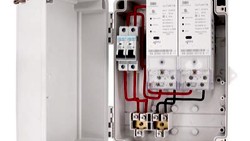The rollout of 5G networks worldwide is expected to improve connectivity and communication capabilities for the electrical energy industry. 5G networks offer faster speeds and lower latency compared to their 4G LTE counterparts, enabling a wide range of transformative applications. While specific speed improvements may vary depending on network infrastructure and other factors, 5G networks generally provide substantial enhancements in data transfer rates and network responsiveness.
With its faster speeds and lower latency, 5G technology holds great potential to revolutionize the electrical energy sector. Utilities can leverage the impressive capabilities of 5G networks to enable real-time monitoring and control within smart grid systems, paving the way for enhanced operational efficiency, grid reliability, and integration of renewable energy sources.
One of the immediate areas where 5G can make a significant impact is through smart metering. By leveraging 5G-enabled smart meters and IoT devices, utilities can gather more frequent and detailed meter readings from countless homes and businesses. This granular data allows utilities to gain a deeper understanding of electricity usage patterns and optimize their operations accordingly. Additionally, the low-latency communication facilitated by 5G networks enables utilities to detect outages quickly, pinpoint their origin, and implement effective response measures in a timely manner. This proactive approach enhances grid resilience and minimizes disruptions for customers.

(symbol image, credit CLOU)
Furthermore, 5G's capabilities empower utilities to optimize grid performance in real-time. By dynamically re-routing power flows based on changing supply and demand conditions, utilities can actively manage voltage levels and ensure better power quality and reliability. Intelligent coordination of distribution assets, such as transformers, capacitors, and voltage regulators, becomes feasible, leading to improved operational efficiency and reduced downtime.
In addition, the high connectivity density of 5G networks allows utilities to integrate intermittent renewable energy sources, such as solar and wind farms, more seamlessly into the grid. Real-time generation and forecast data enable grid operators to balance renewable power with other flexible generation sources, ensuring grid stability while promoting the adoption of sustainable energy solutions.
However, it is important to acknowledge the challenges and considerations associated with harnessing 5G technology in the electrical energy sector. Upgrading grid communication infrastructure to support 5G requires substantial capital investment by utilities. Furthermore, the increased connectivity provided by 5G networks amplifies the need for robust cybersecurity measures to protect critical control systems from potential cyber threats. Ensuring the security and reliability of network slicing capabilities is crucial to maintaining a resilient and secure grid. Additionally, achieving the required coverage and low latency in remote or rugged terrains where the grid operates may present technical difficulties that need to be addressed.
Takeaway
While the exact speed improvements of 5G over 4G LTE networks may vary, the transformative power of 5G technology in the electrical energy sector cannot be underestimated. By leveraging faster speeds, lower latency, and increased connectivity density, utilities can unlock a multitude of opportunities for grid modernization, enhanced renewable energy integration, and improved customer experiences. The potential benefits of 5G in the electrical energy sector are immense, despite the need for infrastructure investments and robust cybersecurity measures.
By embracing this revolutionary technology and addressing its associated considerations, the industry can pave the way for a resilient, sustainable, and efficient electrical energy sector for the years to come.
Feel free to reach out to us if you have any inquiries about our AMI system solutions or meter communication methods. Our team of experts is readily available to assist you.
Editor's note: This article was originally published in September 2023 and has been updated for comprehensiveness.





All comments are moderated before being published. Inappropriate or off-topic comments may not be approved.